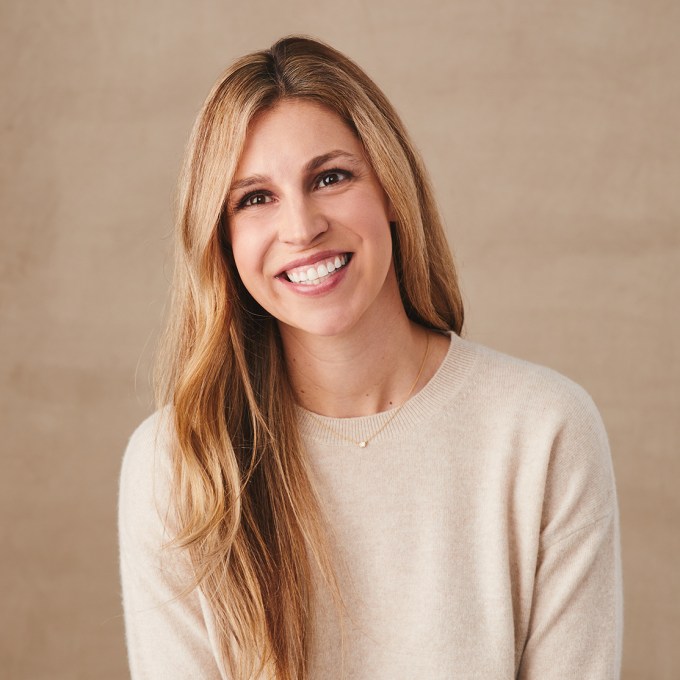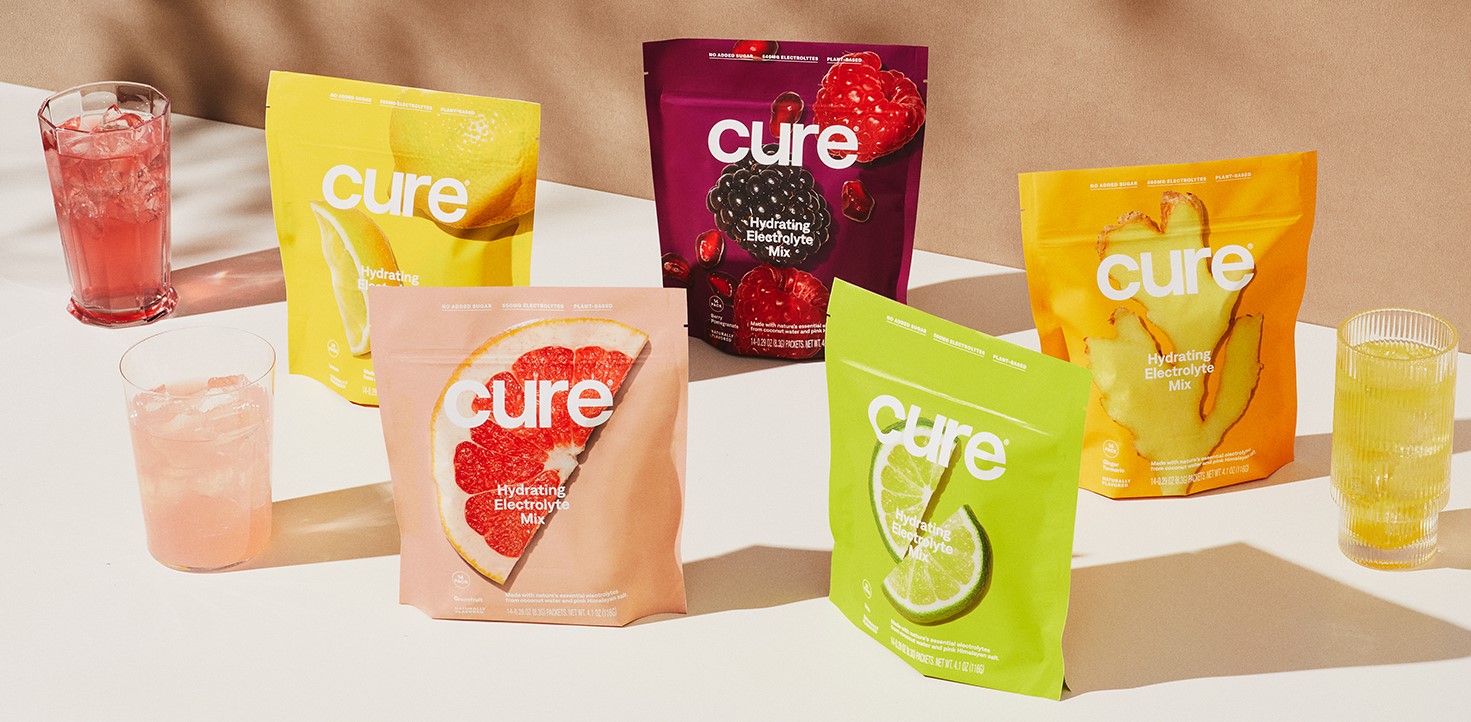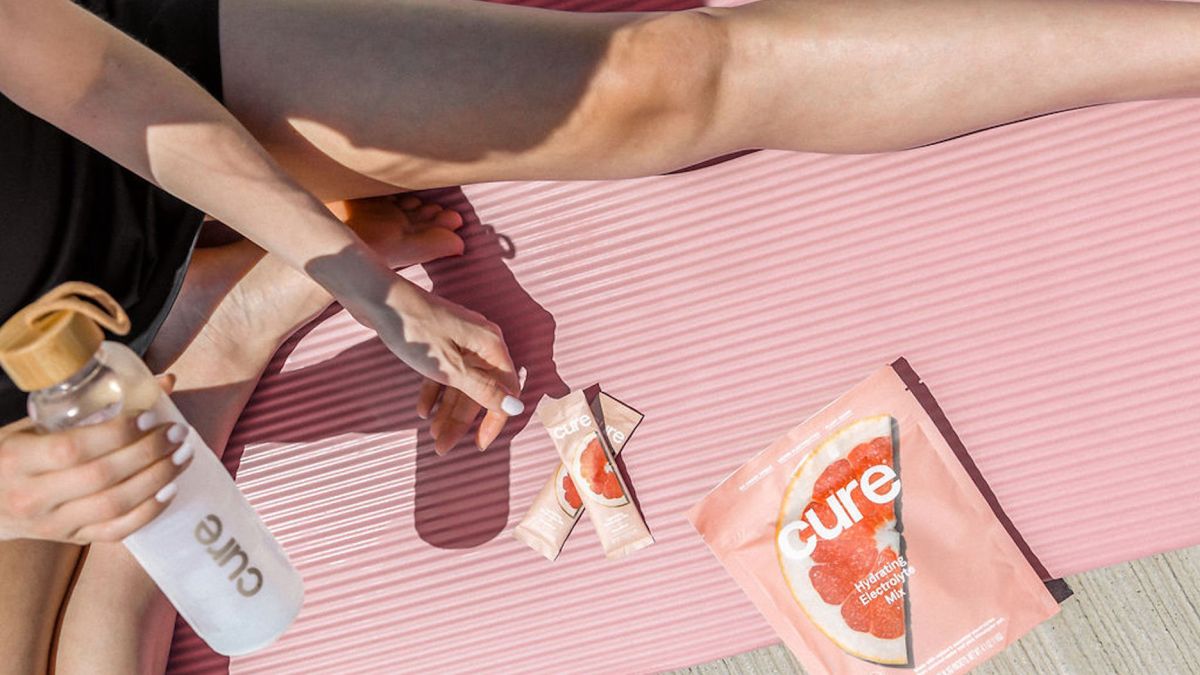Cure, a functional hydration brand, is entering a new phase of its growth that includes nearly quadrupling its retail presence from 2021, rounding out its leadership team and closing on $5.6 million in Series A funding.
It’s been a hot minute since TechCrunch checked in on the brand — almost three years, actually — which is carving out a unique niche in the $10 billion functional drink mix market that founder and CEO Lauren Picasso told TechCrunch has “exploded” in the past 12 months.
Picasso attributes much of that to consumer behavior toward more environmentally-friendly products, including the ease of using powder versus ready-to-drink liquids, which weigh more to ship and have more packaging.
Hydration is not a new concept (who can forget The Right Stuff?), but consumers looking for healthier options have, in turn, created a more competitive landscape in recent years.
Picasso touts Cure as the “only female-founded electrolyte brand” and considers its biggest competitor to be Liquid I.V., which was acquired by Unilever in 2020. She also said “legacy players are doing really well as lots of new players have entered the market” in the past few years. Some of those other functional beverage startups are also venture-backed. For example, Hydrant, also in hydration, Olipop and Poppi in the soda space and The Ryl Company in tea.

Cure founder and CEO Lauren Picasso. Image Credits: Cure
To differentiate itself more from the plethora of hydration options, Cure went through a rebrand in 2022 to focus more on its ingredients. For example, it uses coconut water powder and pink Himalayan salt, while other drink mix companies use cane sugar, dextrose, high-fructose corn syrup and synthetic and artificial ingredients, Picasso said.
“We wanted to rebrand and really better communicate our clean, plant-based ingredients,” Picasso added. “We feel that we’re just as effective as products like Liquid I.V., but we are using much better ingredients. There’s a really clear point of differentiation, and because of that, we end up attracting very different consumers than any of our competitors. Our product tends to skew female, which is pretty unique, and tends to be a very active health conscious consumer.”
Since launching in 2019, Cure has grown, on average, 230% each year in revenue, and will expand its retail footprint from 4,000 stores in 2021 to 15,000 in 2023, Picasso said.
The company’s products are already in CVS and Walgreens, but now will also be in retailers, including Sprouts, Albertsons, Kroger, Stop & Shop, Wegmans and HEB. Overall, there are nine flavors, four of them new: lime and orange launched in 2022 and lemonade and strawberry kiwi this year.
While Cure is accelerating its retail presence, it continues to have about 60% penetration in e-commerce, and in the first quarter of 2023 outpaced its prior year’s quarter growth by 121%, and all with just nine full-time employees, Picasso said.
Having already secured $2.6 million in seed funding in 2020, Cure’s $5.6 million Series A funding, which closed in March, gives the company $8.2 million in total venture-backed capital. With the new capital, the company is now valued at $22 million, which Picasso said is over 2x the valuation from Cure’s previous round.
The Series A was planned, with Picasso noting that “this is going to be our last round. From here on out, we will be working toward profitability, aiming to be profitable by the beginning of 2024.”

Cure’s hydration mix flavors. Image Credits: Cure
Lerer Hippeau, which led Cure’s seed round, is back to lead the new investment and was joined by a group of new and existing investors, including Valedor Partners, Simple Food Ventures, Great Oaks Venture Capital, Joyance Partners, Silas Capital and Kim Clijsters.
Cure intends to invest the new capital in faster retail expansion, growing its leadership team, acquiring new customers and developing new products, including a bulk jar option that subscriber customers have been requesting.
With regard to its leadership team, the company recently hired Laura Kendrick, former chief marketing officer at SmartyPants, and Stacey Gillespie, former vice president of innovation at Gaia Herbs, to help scale distribution and overall revenue.
Cure has been successful with influencer marketing, amassing 700 influencers as part of its ambassador program, but Picasso brought Kendrick on “to really help the brand scale,” while Gillespie will lead the advancement of the company’s product development and expansion into other functional categories, for example energy and health.
“We were looking for someone to scale all these different marketing channels and really drive the brand strategy going forward,” Picasso said. “Meanwhile, Stacey is an industry veteran who brought 1,500 new products to market over the course of her career.”
To that end, Cure’s products went on the shelves of a number of new retailers in the last four months while also doubling its footprint in CVS. It is now working on some new products that will be launched in the next year or so, Picasso said.
“We have a lot of retail expansion planned, so the next two years will be about executing in those doors and coming up with a marketing playbook to be successful in stores,” she added.
